Syn.: Actinochloa gracilis (Kunth) Willd. ex Roem. et Schult., Atheropogon gracilis (Kunth) Spreng., Atheropogon oligostachyus Nutt., Bouteloua oligostachya (Nutt.) Torr. ex A. Gray, Chondrosum gracile Kunth, Chondrosum oligostachyum (Nutt.) Torr., Eutriana gracilis (Kunth) Trin., Eutriana oligostachya (Nutt.) Kunth
Family: Poaceae Barnhart
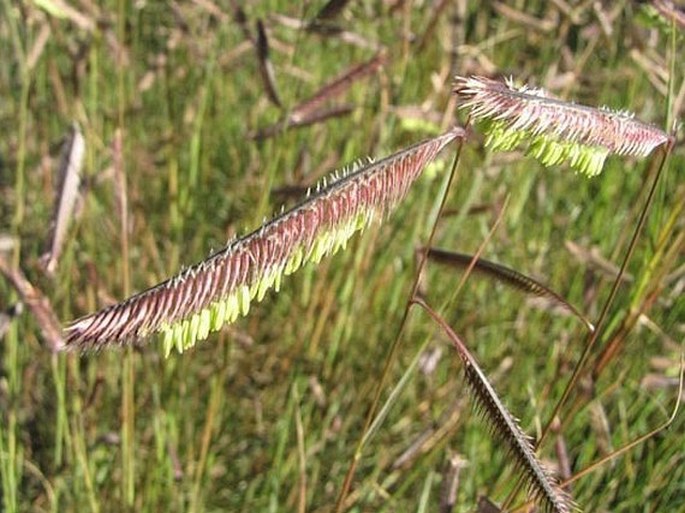
Distribution: Northamerican species found in the western part of the continent, from Canadian provinces of Alberta, Saskatchewan and Manitoba across the Rocky Mountains and the prairies down to Southmexican states of Veracruz and Oaxaca.
Ecology: Typical species of Northamerican prairies. It grows on dry, sandy and rocky slopes, in bushes and woodland up to the elevation of 2700 m. It blooms during summer.
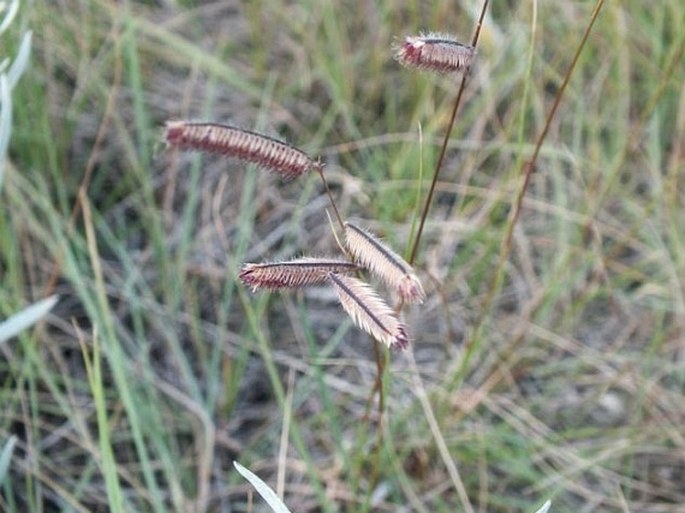
Description: Perennial bunchgrass, 15–60 cm tall. Stems are straight, leafy at base; rhizome mat-forming. Blades are often curled or twisted, 10–30 cm long, 1–2 cm wide; sheaths hairless. Inflorescence is a panicle, bluish purple, comb-like, 1.5–4 cm long, 1–3 spikes near the stem top; spikelets about 5 mm long, borne in 2 rows on one side of the stem; glumes unequal, 2–5 mm long; lemmas with awns about 1.5 mm long. Fruit is caryopsis.
Usage: First settlers appreciated this grass for good grazing. As it is a decorative plant, it is used at present in European gardens and flower arrangements.
Native Americans used Blue Grama to forecast winter weather. If stems had 1 spike, the winter would be mild, if 2 or more, it would be harsh winter.
Threat and protection: State of Illinois lists it as endangered.
Note: Genus Bouteloua contains about 40 species found from Canada to Argentina. The generic name is after Spanish explorer and botanist Claudio Boutelou y Soldevilla (1774–1842).
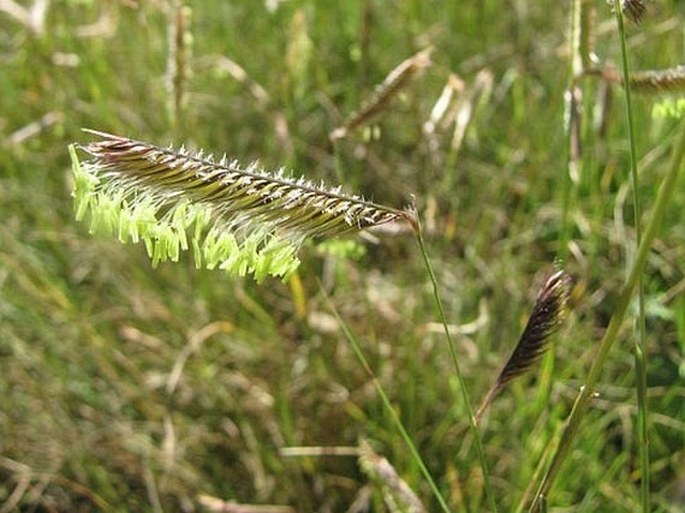
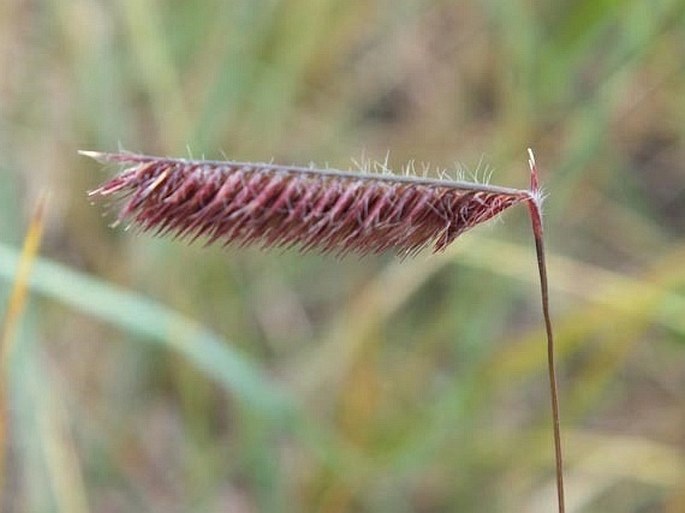
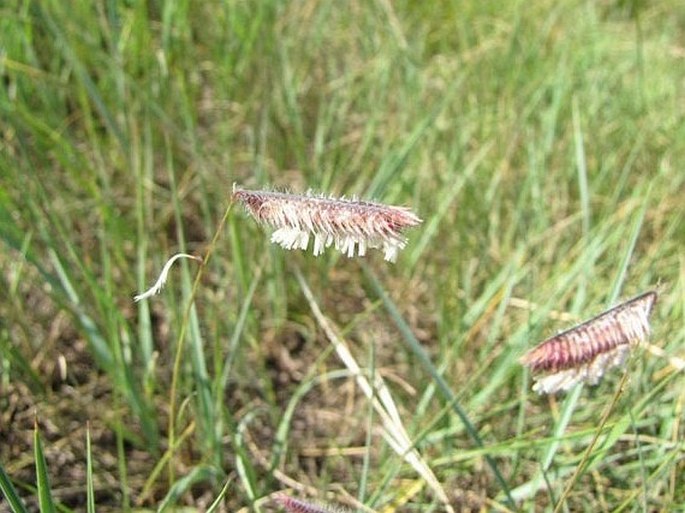
These images were taken in Canada, Alberta, Calgary, Nose Hill Park (August 2013).


